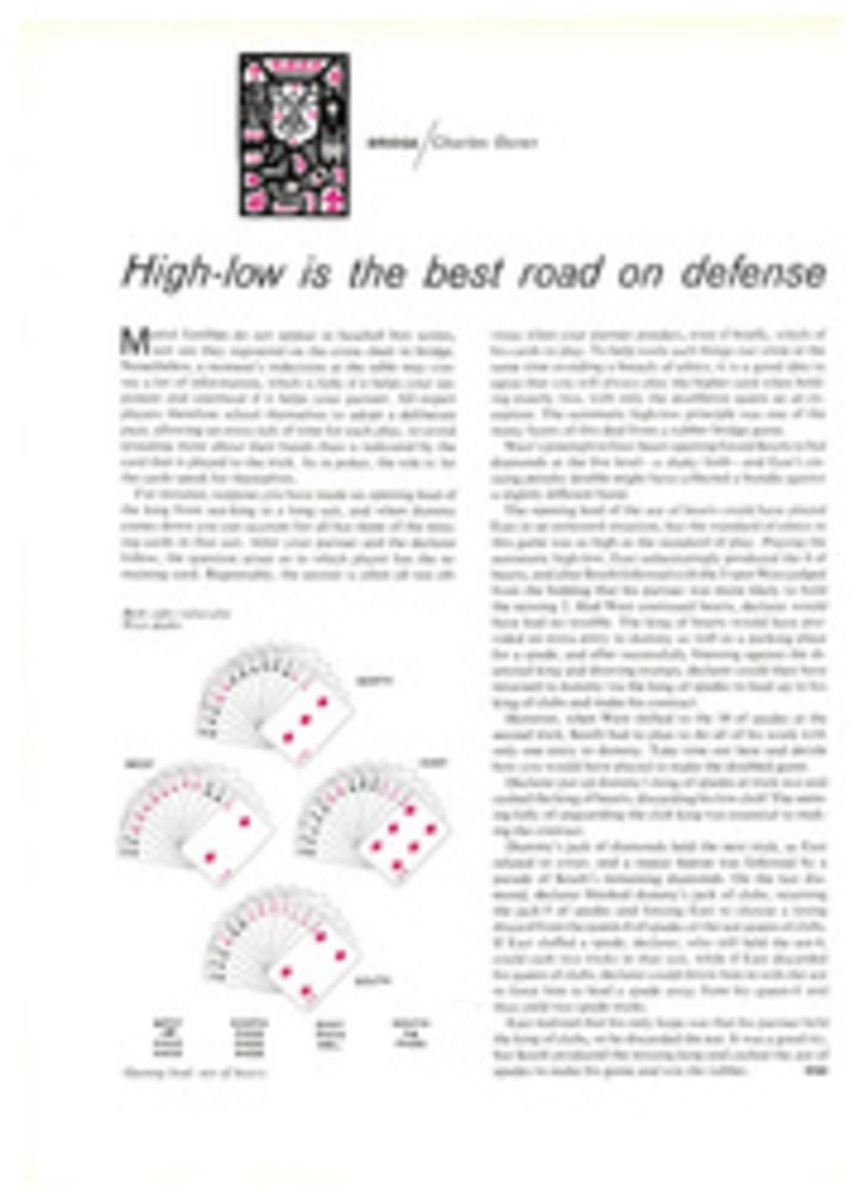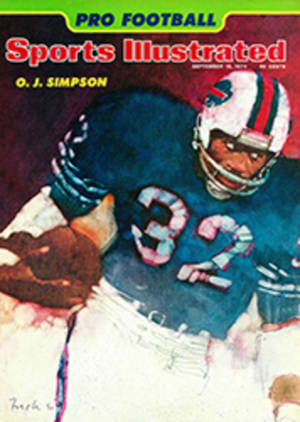
NATIONAL EAST
This division is no longer the exclusive province of Washington and Dallas. The reviving city of Philadelphia, which has shouldered its way to the forefront of hockey and baseball, not to mention box lacrosse, is now ready to make its presence felt in the NFL. That's right, fans! Watch out for the Eagles!
The turnabout in Philadelphia started last year with the arrival of Coach Mike McCormack. Only live of the 22 regulars he inherited will be starting this Sunday, and three of those will be at new positions. Last season McCormack transformed the Eagles' offense from the third-worst in football into the second-best. The hero—some Philadelphians prefer "the messiah"—was Roman Gabriel, the ex-Los Angeles Ram quarterback who was the only passer in the NFL to throw for more than 3,000 yards. His main targets were 6'8" Harold Carmichael, whose 67 receptions led the league, and 6'4" Tight End Charles Young, who made All-Pro as a rookie and led all tight ends with 55 catches. Along with 6'3" Don Zimmerman, these receivers were known as the Fire High Gang because, as the story goes, whenever Gabriel called a passing play, one of them would say, "Fire high, baby."
Philadelphia also moved the ball well along the ground. Oft-injured Running Back Norm Bulaich played in all 14 games, gained 436 yards and caught 42 passes for 403 more. Tom Sullivan, who paints in the Impressionist manner and spent a month in the off-season touring the Everglades in a canoe, ran for a surprising 968 yards and caught 50 passes. They were aided by the blocking of three players McCormack got in the first two rounds of the draft: Tackle Jerry Sisemore, Center Guy Morriss and Young.
Defense, unfortunately, was a different story. Only twice all year did the Eagles hold opponents to fewer than 23 points. McCormack is trying to change Philadelphia from a reading defense to an aggressive one. His prime objective throughout the off-season was to find an intimidating middle linebacker. The day after the Eagles opened their training camp, he traded his first draft choice in 1977 and his first and second in 1978 to Cincinnati for Bill Bergey. "Bergey," says McCormack, "is a defensive Roman Gabriel." In the pursuit of aggression the Eagles also acquired 6'3" Chicago Bear Cornerback Charlie Ford, known as "The Blade" for his slim build and hitting technique.
The Eagles still have their shortcomings. Despite encouraging preseason performances by their young quarterbacks, John Reaves and rookie Mike Boryla, they rely heavily on Gabriel. Last year, in their second game against Dallas, whom they had already beaten once, the Eagles were leading 10-0 before Gabriel got hurt. They lost 31-10. Now Gabriel has to lead teammates who were angered by his apparent anti-union stance during the strike. The defensive line is somewhat unsettled and inexperienced and, significantly, many of the defensive players profess a low opinion of the team's defensive coaches. Still, the Eagles are coming fast.
Dallas must still be considered the favorite, but a morale problem endangers that status. Traditionally, the Cowboys have been a triumph of speed and power over emotionalism. They have never been a happy group. "If they were a close-knit team, no one would ever touch them," says one veteran Redskin. Now Dallas may have more internal problems than it can suppress.
The strike was a divisive force. "It got to be a black-white thing on this team, and it could tear everything up," says Wide Receiver Bob Hayes. And defections to the WFL have hit the Cowboys harder than any other team. Already, eight Dallas veterans have decided to jump. Most prominent is Calvin Hill, a 1,000-yard rusher the last two seasons. There has always been a question about Hill's durability; now there are additional questions about his lame-duck status and his feelings as a disappointed player representative.
For all their troubles, the Cowboys are loaded with talent. Roger Staubach led the league in passing last year. On defense, Ed (Too Tall) Jones, the first player taken in the NFL draft, should eventually win a starting spot at end, and in passing situations will team with another end, Harvey Banks Martin, to give Dallas its biggest pass rush in years. Defensive Tackle Bob Lilly has returned for his 14th season in surprisingly sound condition, and Linebacker Lee Roy Jordan improves with age. He had his best year in 1973, winning All-Pro honors.
One glaring weakness could be the kicking game. Placekicker Toni Fritsch needed surgery on his left knee after he was cut down on a kickoff in an exhibition game and will be lost for the season. Fritsch's replacement, free agent Harry Kokolus, pulled a muscle and his replacement, George Hunt, has missed his last three extra-point attempts.
The Redskins thought they had found the answer to their kicking woes. After erratic Curt Knight retired, saying he would never play for George Allen again, the Skins signed Mark Moseley, a free agent cut loose by Houston last year. Moseley was flawless in the early exhibitions, so much so that his performance seemed too good to be true. It was. He missed two extra points in a two-point loss to the Steelers.
While critics gleefully anticipated the decline and fall of the Allen empire, Allen stayed, as always, one step ahead of the game. He traded three draft choices—what else is new?—for the rights to Safety Bryant Salter, who had played out his option in San Diego, and beat out the WFL by signing him. He also became the first coach to trade for a player who had signed with the new league when he got Running Back Larry Smith from Los Angeles.
Allen thrives on controversy. He talked his most consistent lineman, Defensive End Ron McDole, out of retiring, then picked up insurance by acquiring 35-year-old San Diego End Deacon Jones, who made headlines this year only because he was fined for drug abuse. McDole and Jones both play the left side and both were expecting to start, which created an impossible situation coaches other than Allen try to avoid.
The Redskins still have plenty of strength. Billy Kilmer should be better now that postseason surgery has cleared an intestinal block that had him commuting from the hospital to the playing field. Charley Taylor, the leading active receiver in football, and Roy Jefferson are a good pass-catching, blocking pair. Running Back Larry Brown has rid himself of persistent injuries and the personal hurt he felt last year over a contract dispute (and Washington's acquisition of Duane Thomas to help settle that dispute). The Redskin defense led the league with 53 sacks and finished second in interceptions with 26.
Yet there are question marks. Last season the offensive line was hobbled by leg miseries that resulted in a league-low 3.1 yards per rush. Now Tackle Terry Hermeling is out with a knee injury, and Allen is desperately patching with players who would be considered over the hill elsewhere. To make matters worse, Running Back Charlie Harraway jumped to the WFL and the status of his replacement, the talented but moody Thomas, is a continuing mystery. And Allen has yet to find a middle linebacker in whom he can place complete confidence.
Of course, not everyone can be a contender. The St. Louis Cardinals have suffered through three straight 4-9-1 seasons. That streak and their other one—two straight years without a player in the Pro Bowl—should continue. Last year new Coach Don Coryell got the team's offense untracked. When the Cards scored more than 30 points, which they did four times, they won. Otherwise, it was no soap. The team finished dead last in defense. So what did the Cardinals do? They traded for San Francisco Running Back Ken Willard. And they drafted Tight End J. V. Cain of Colorado, even though they already had a tight end in Jackie Smith. Smith and Cain will play at the same time, with one or the other splitting wide on most plays. Then, during the preseason, St. Louis acquired Chicago Wide Receiver Earl Thomas, who can also play tight end.
The New York Giants have a new director of operations, Andy Robustelli, and a new coach, Bill Arnsparger, who had the title of assistant head coach under Don Shula in Miami. Together, they have brought much-needed organization to a team that all too often has been run paternally instead of professionally. The Giants are building. Their first two draft picks, Ohio State's John Hicks and Southwest Missouri State's Tom Mullen, will start on the offensive line. Their third pick, Linebacker Rick Dvorak of Wichita State, is being trained at the "53" position Arnsparger made famous at Miami and which he plans to use extensively in New York. The Giants appear to be on the road up, but it's a long road and in the National East there are no shortcuts.
ILLUSTRATION
DAVID LEVINE
Tom Landry: DALLAS COWBOYS
ILLUSTRATION
DAVID LEVINE
Don Coryell: ST. LOUIS CARDINALS
ILLUSTRATION
DAVID LEVINE
Mike McCormack: PHILADELPHIA EAGLES

